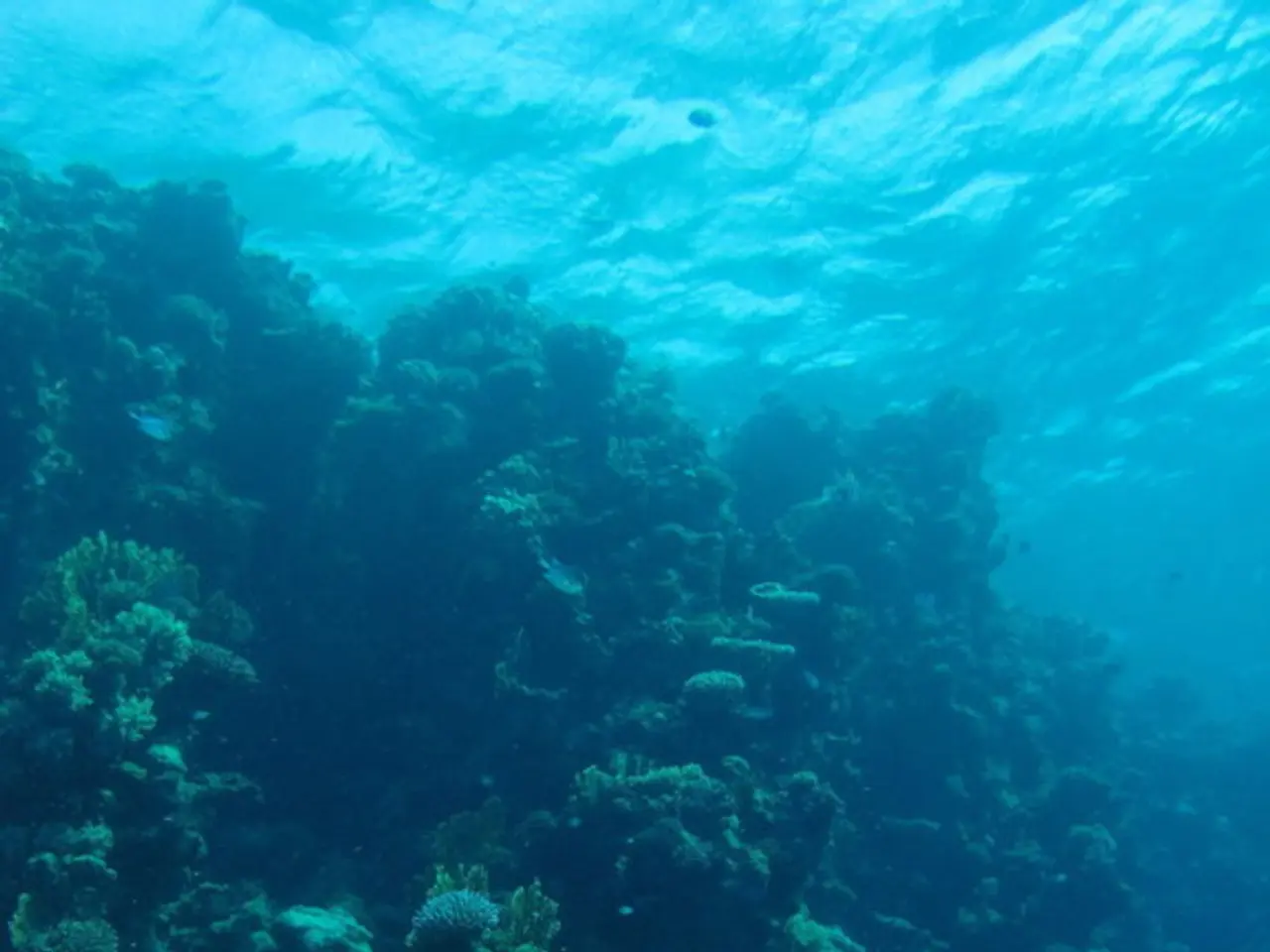Ocean and Atmospheric Flow Interdependence
In the vast expanse of our planet's oceans, a complex and intricate dance of water movements unfolds, shaping climate and marine ecosystems alike. This dance is none other than the ocean currents, a crucial part of our global climate system.
At the heart of this dance are two significant climate phenomena: El Niño and La Niña. These periodic occurrences, happening every few years and lasting from several months to over a year, play a crucial role in determining sea surface temperature and, consequently, weather patterns around the world.
El Niño refers to the periodic warming of sea surface temperatures in the central and eastern Pacific Ocean, while La Niña involves the cooling of these waters. These phenomena, illustrating how changes in ocean currents can drastically impact climate and weather, are closely linked to agriculture and marine ecosystems.
The sea surface temperature, a key factor driving ocean currents, is one of the main sources influencing their formation. Changes in this temperature can lead to different oceanic currents, which, in turn, help distribute heat around the planet, influencing weather patterns.
Ocean currents also play a pivotal role in regulating temperatures and moving nutrients. Nutrients are essential for marine ecosystems, and currents help distribute these crucial elements. Moreover, changes in oceanic circulation can impact the entire marine ecosystem, including fish populations and species that depend on certain temperature ranges.
The relationship between ocean currents and climate is significant. For example, the Antarctic Circumpolar Current, a major circulation ring connecting the Pacific, Atlantic, and Indian Oceans, is driven by strong westerly winds and the absence of land barriers, influencing global heat and nutrient transport.
One crucial part of the world's oceanic circulation is the thermohaline circulation. This global conveyor belt of water movement is driven by differences in water density, which are influenced by temperature and salinity. Thermohaline circulation affects weather patterns and can even change climate conditions across the planet. It also connects different parts of the ocean, creating a global conveyor belt of water.
However, the thermohaline circulation is not the only factor influencing ocean currents. Wind patterns, the Earth's rotation (Coriolis effect), and the shape and position of continents and ocean basins also play significant roles.
In the context of climate change, monitoring sea surface temperature is vital. Increasing sea surface temperature is a clear indicator of global warming, and anomalies in thermohaline circulation can lead to significant changes, such as extreme weather conditions. Higher sea temperatures can lead to increased evaporation and more intense rainstorms or hurricanes.
Understanding ocean currents is crucial for preserving marine ecosystems. Marine ecosystems rely on oceanic circulation for nutrient distribution, and changes in currents can impact species that depend on certain temperature ranges. Furthermore, understanding the connection between air and ocean currents is crucial for predicting future climate scenarios.
The troposphere, the lowest layer of the atmosphere where weather patterns and most living organisms thrive, is another critical component of this interconnected system. Solar energy interacts with the atmosphere, affecting sea surface temperature and driving wind patterns. The stratosphere, containing the ozone layer that protects us from harmful ultraviolet radiation, also plays a role in this complex dance.
In conclusion, the ocean currents, from the smallest ripples to the vast circulations, are a fundamental part of our planet's climate system. Understanding and monitoring these currents can help us predict potential weather-related disasters, preserve marine ecosystems, and navigate the challenges of climate change.
Read also:
- Peptide YY (PYY): Exploring its Role in Appetite Suppression, Intestinal Health, and Cognitive Links
- Toddler Health: Rotavirus Signs, Origins, and Potential Complications
- Digestive issues and heart discomfort: Root causes and associated health conditions
- House Infernos: Deadly Hazards Surpassing the Flames








